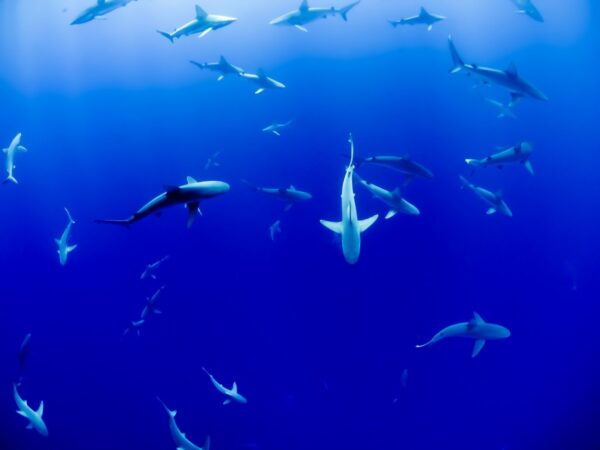In a new global study, experts use the iconic predatory tunas, billfishes and sharks as sentinels of ocean health to support the development of long-term and robust indicators for addressing sustainability and biodiversity loss in oceanic ecosystems.
The AZTI technology centre, in collaboration with Simon Fraser University (SFU) and the International Seafood Sustainability Foundation (ISSF), has developed this new science-based indicator.
The continuous Red List Index of oceanic predatory fishes tracks yearly changes in extinction risk in oceanic tunas, billfishes and sharks over the last 70 years, revealing that the rebuilding of highly valuable commercial species of tunas and billfishes is possible, yet sharks caught in the same fisheries continue to decline.
The species are used to track progress towards global sustainability and biodiversity targets established by the Convention on Biological Diversity Post 2020 Biodiversity Framework and the Sustainable Development Goals 2030 Agenda for Sustainable Development. Based on the International Union for Conservation of Nature (IUCN) Red List Categories and Criteria, this study derives a novel continuous Red List Index (RLI) for tracking the yearly changes in extinction risk of oceanic predatory fishes over the last 70 years. Specifically:
- It reveals how since the 1950s the global extinction risk of oceanic predatory fishes has continuously worsened due to excessive fishing pressure until the late Then, the implementation of management measures in international fisheries organizations effectively reduced fishing mortality, recovering tunas and billfishes, yet the extinction risk in the undermanaged sharks continues to rise.
- The continuous RLI of oceanic predatory fishes (state indicator) is highly sensitive and responsive to fishing mortality (pressure indicator), connecting for the first-time annual changes in global extinction risk with changes in fishing
Core problem
This study reveals a core problem in the management of oceanic multi-gear and multi-species fisheries. While commercially valuable target species of tunas and billfishes are increasingly sustainably managed and recovered, the shark species being captured incidentally by the same fisheries continue to decline due to insufficient management actions. Overfishing and lack of effective management remains the main risk for oceanic sharks incidentally caught in tuna and billfish fisheries around the globe
Benefits of the red List Index
- The global RLI (state indicator) by tracking closely the changes in fishing mortality (pressure indicator) over the last 70 years, provides decision-makers with a robust and long term linked set of pressure-state indicators, which can be used for tracking the health of oceanic biodiversity and addressing sustainability and biodiversity loss in oceanic
- Furthermore, the strong alignment between the Red List status and fishery exploitation status of tuna, billfish and shark populations, when making these comparisons at the same scale, eliminates any technical barrier to the use of the RLI by policy makers to track global sustainability and biodiversity
Recommendations
- Despite the policy complexity, insufficient data and monitoring, economic concerns of fleets, and lack of political will to manage oceanic sharks, the authors think it is possible to replicate the successes of tuna and billfish fisheries management in
- Oceanic sharks urgently need better management and protection from Yet these would involve redefining priorities in international fisheries bodies (the five tuna Regional Fisheries Management Organizations – tuna RFMOs), and setting clear biodiversity goals and targets hand by hand with fishery sustainability goals and targets.
A video from the author speaking about the study can be viewed here. The full journal article published in Science can be read here.
